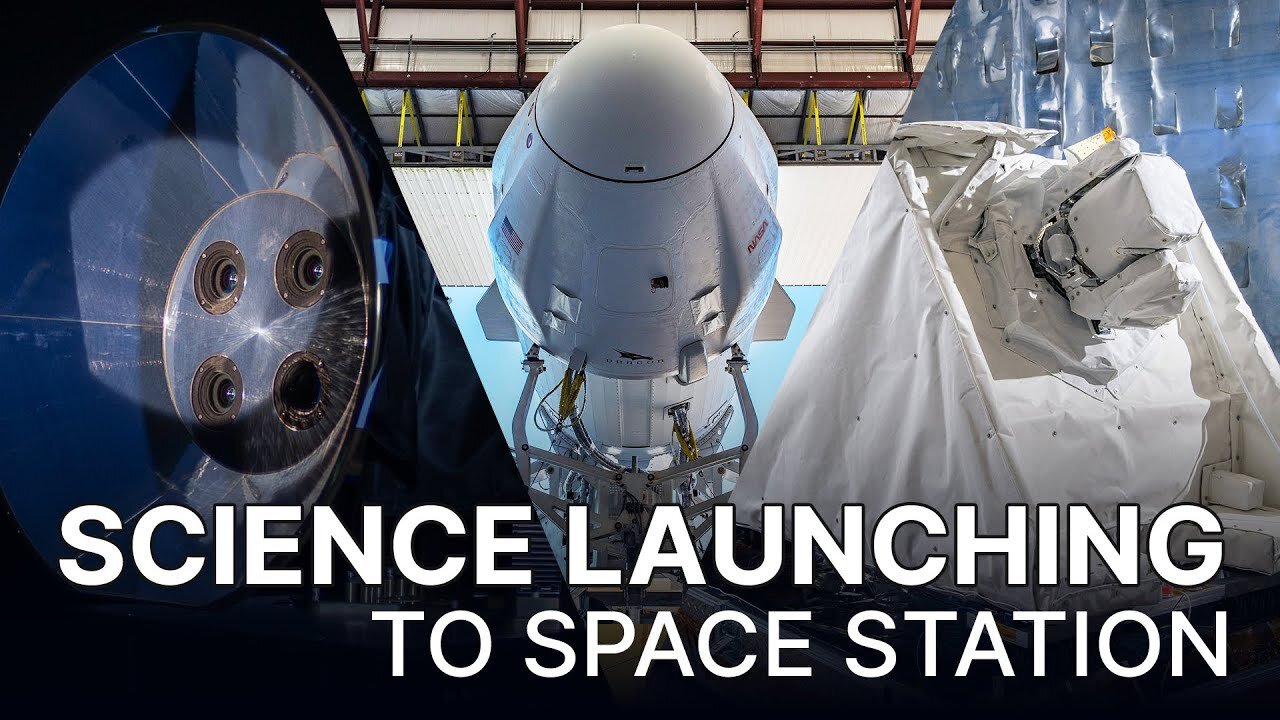Premium Only Content

Science Launching on SpaceXs 29th Cargo Resupply Mission to the Space Station
Launching cargo resupply missions to the International Space Station (ISS) is a routine operation conducted by space agencies and commercial companies. These missions are essential for maintaining the station's functionality and supporting the needs of the astronauts on board.
Here are some key points about such missions:
1. Purpose: Cargo resupply missions are launched to deliver essential supplies, equipment, and experiments to the astronauts on the ISS. This includes food, water, scientific instruments, spare parts, and various research payloads.
2. Space Agencies and Companies: Multiple organizations are involved in these missions. NASA, the Russian space agency Roscosmos, the European Space Agency (ESA), the Japan Aerospace Exploration Agency (JAXA), and private companies like SpaceX and Northrop Grumman are among the entities that participate in these missions.
3. Launch Vehicles: Various rockets are used to launch cargo resupply missions, such as the SpaceX Falcon 9, Northrop Grumman Antares, and Russian Soyuz and Progress spacecraft.
4. Cargo Delivery: The cargo is typically housed in specialized spacecraft, like the SpaceX Dragon, Northrop Grumman Cygnus, or Russian Progress spacecraft. These vehicles are designed to safely transport cargo to the ISS and can be either crewed or uncrewed.
5. Frequency: Cargo resupply missions are launched regularly, with missions occurring several times per year. The specific frequency depends on the needs of the ISS and the capabilities of the participating space agencies and companies.
6. International Collaboration: The ISS is a collaborative project involving multiple countries and space agencies. Cooperation is key to ensuring the station's continuous operation and success.
7. Research and Experiments: In addition to delivering supplies, these missions also support scientific research. The cargo often includes experiments that astronauts conduct in the unique microgravity environment of the ISS.
8. Return Cargo: These missions also bring back scientific samples and experiments from the ISS to be analyzed on Earth.
9. Maintenance: Sometimes, cargo missions include equipment and spare parts needed for station maintenance and repairs.
The specific details of a cargo resupply mission, including the launch date, payload, and participants, can vary from one mission to another. To get the most up-to-date information on a specific cargo resupply mission, you can check the websites and announcements of the space agencies and companies involved, such as NASA or SpaceX.
-
 LIVE
LIVE
The Bubba Army
23 hours agoMinneapolis Shooter Story Unfolds! - Bubba the Love Sponge® Show | 8/28/25
1,847 watching -
 LIVE
LIVE
JuicyJohns
1 hour ago🟢#1 REBIRTH PLAYER 10.2+ KD🟢
26 watching -
 LIVE
LIVE
GritsGG
55 minutes agoWin Streaking! Most Wins 3485+ 🧠
61 watching -
 16:58
16:58
marcushouse
14 hours ago $3.11 earnedSpaceX Starship Flight 10: What Really Happened! 🚀
37.6K13 -
 3:47
3:47
Blackstone Griddles
14 hours agoCampground Meal Planning on the Blackstone Camping Griddle
10K1 -
 28:13
28:13
Her Patriot Voice
14 hours ago $1.17 earnedIs Flag Burning Free Speech?
11K16 -
 17:51
17:51
TheRoyaltyAutoService
16 hours ago $0.54 earnedIs Flat Rate Ruining The Auto Repair Industry?!
12.3K7 -
 2:02:05
2:02:05
BEK TV
1 day agoTrent Loos in the Morning - 8/28/2025
12.8K -
 26:00
26:00
DeVory Darkins
1 day ago $12.23 earnedDemocrat Mayor HUMILIATES himself during painful interview as Trump makes SHOCKING Announcement
44.4K100 -
 22:14
22:14
Ohio State Football and Recruiting at Buckeye Huddle
1 day agoOhio State Football: Everything Steve Sarkisian Said About the Buckeyes This Week
29.2K